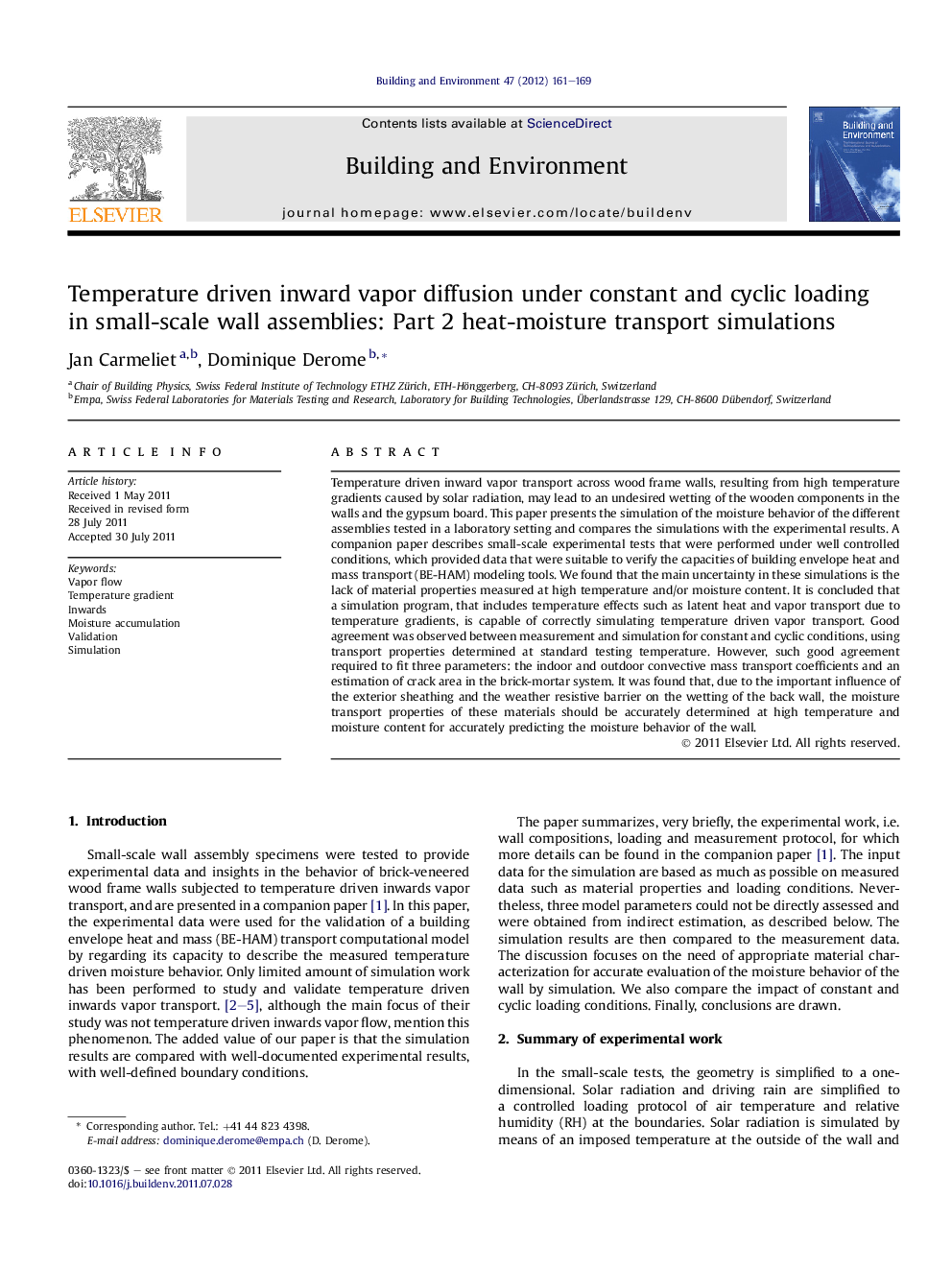| کد مقاله | کد نشریه | سال انتشار | مقاله انگلیسی | نسخه تمام متن |
|---|---|---|---|---|
| 248598 | 502576 | 2012 | 9 صفحه PDF | دانلود رایگان |

Temperature driven inward vapor transport across wood frame walls, resulting from high temperature gradients caused by solar radiation, may lead to an undesired wetting of the wooden components in the walls and the gypsum board. This paper presents the simulation of the moisture behavior of the different assemblies tested in a laboratory setting and compares the simulations with the experimental results. A companion paper describes small-scale experimental tests that were performed under well controlled conditions, which provided data that were suitable to verify the capacities of building envelope heat and mass transport (BE-HAM) modeling tools. We found that the main uncertainty in these simulations is the lack of material properties measured at high temperature and/or moisture content. It is concluded that a simulation program, that includes temperature effects such as latent heat and vapor transport due to temperature gradients, is capable of correctly simulating temperature driven vapor transport. Good agreement was observed between measurement and simulation for constant and cyclic conditions, using transport properties determined at standard testing temperature. However, such good agreement required to fit three parameters: the indoor and outdoor convective mass transport coefficients and an estimation of crack area in the brick-mortar system. It was found that, due to the important influence of the exterior sheathing and the weather resistive barrier on the wetting of the back wall, the moisture transport properties of these materials should be accurately determined at high temperature and moisture content for accurately predicting the moisture behavior of the wall.
► We model the behavior of envelope walls subjected to conditions leading to temperature driven inward moisture transport.
► We use well-documented experimented data for comparison.
► The heat and moisture transport model is validated to capture the main behavior.
► We indicate that there is a need for material transport properties at high temperature and moisture content.
Journal: Building and Environment - Volume 47, January 2012, Pages 161–169